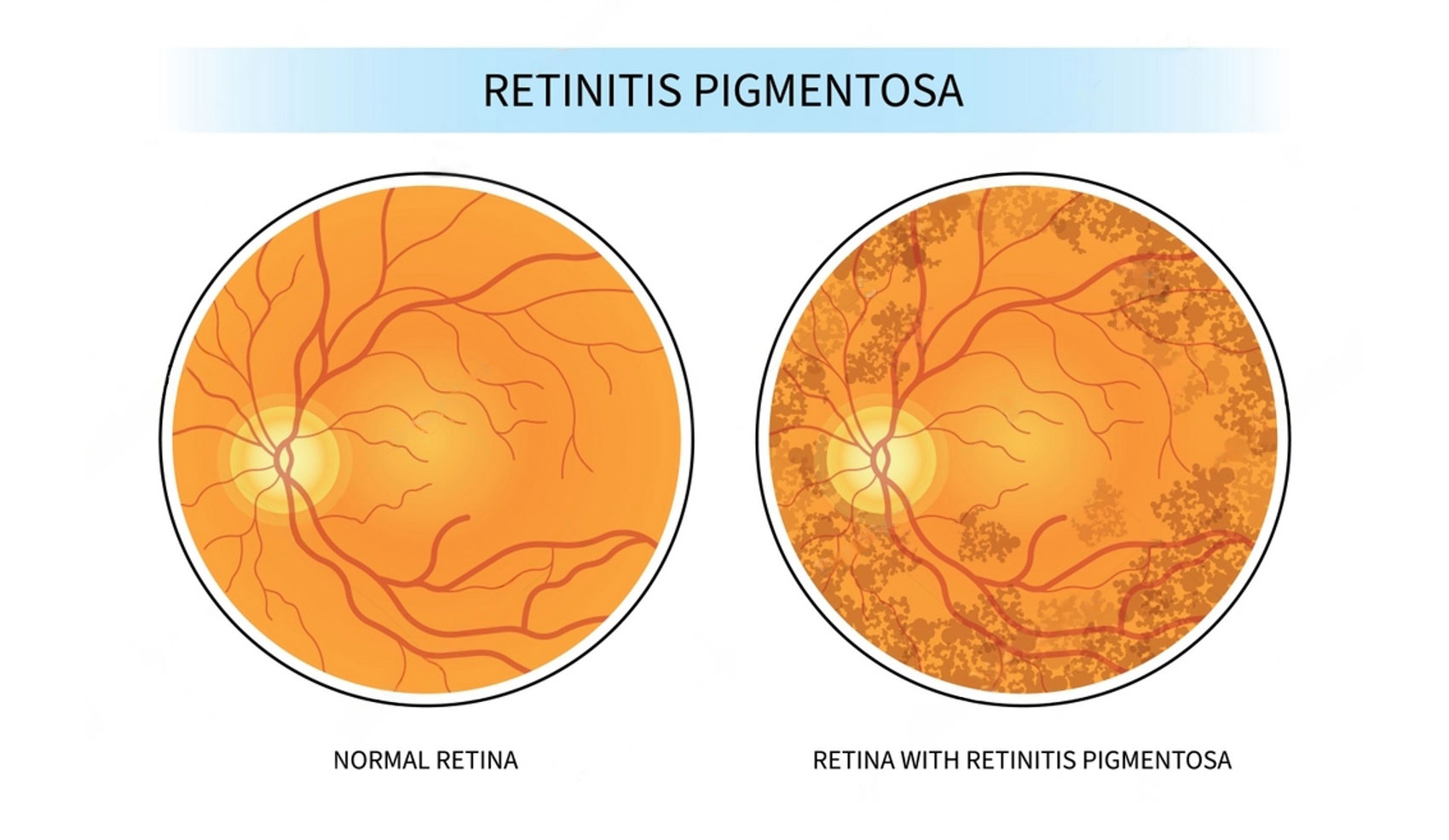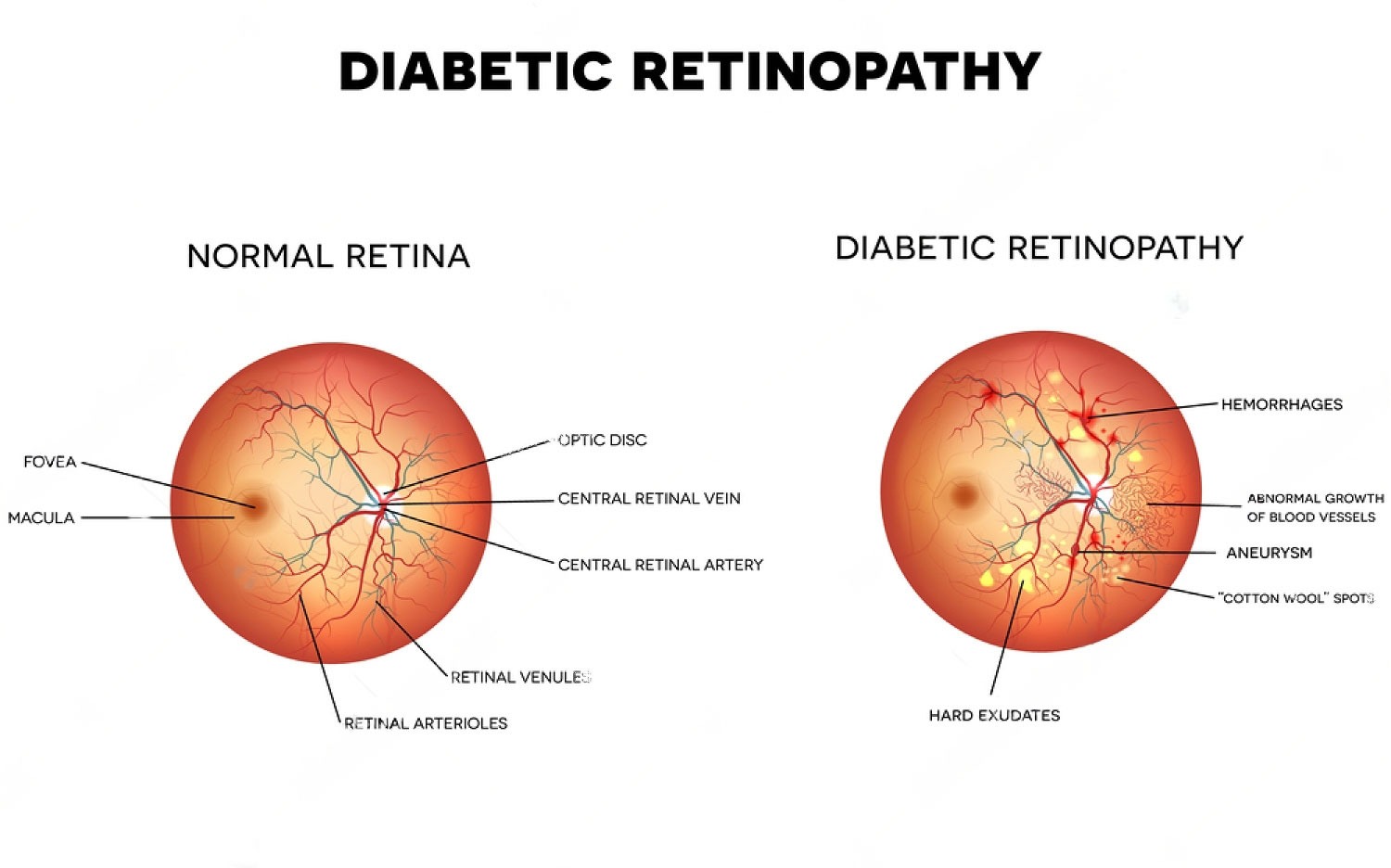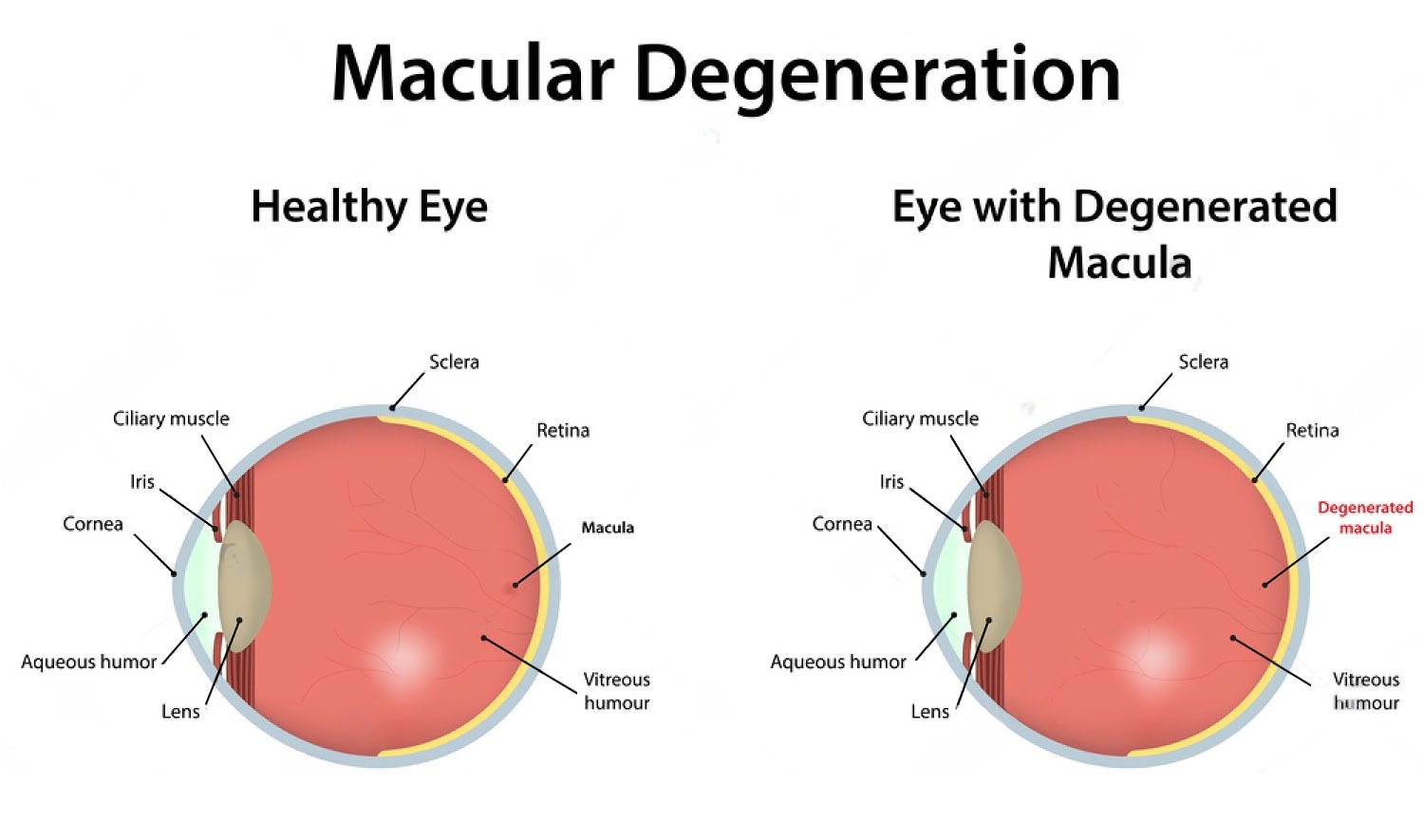As the name suggests, degenerative eye conditions are diseases that lead to loss of central vision. Degenerative eye conditions lead to different internal parts of your eye to disintegrate over time due to varying factors, which leads to central vision loss. Degenerative macular disintegration and retina degeneration are just some examples of degenerative eye diseases. But what are these conditions? How are they caused? And are you at risk for macular degeneration? Let’s answer all the questions in this article.
What Are Common Degenerative Eye Diseases?
Many degenerative eye diseases affect people over the age of 40. These include retinitis pigmentosa, diabetic retinopathy, glaucoma, and age-related macular degeneration. In India, a major part of the population over 40 suffers from these problems. And given they don’t have telltale symptoms initially, it becomes a leading cause of blindness among the elderly. So, let’s learn more about these common degenerative eye diseases, their causes, symptoms, treatment, and risk factors.
1. Retinitis Pigmentosa
Retinitis pigmentosa (RP) is a condition that causes retina degeneration over time. This condition leads to loss of central vision and can even lead to blindness. Retinitis pigmentosa is caused genetically, making it one of the only conditions in this list that can affect anyone regardless of their age. Due to the genetic factor, the symptoms of retinitis pigmentosa can start showing from childhood, and without timely therapy and treatment, it can lead to complete loss of vision.

Symptoms
The symptoms can start showing at any age, but they generally start exhibiting when the child is a few years old. One of the most important symptoms of retinitis pigmentosa is problems seeing at night. This includes problems seeing in the dark or even adjusting to dim lights.
Another major symptom of retinitis pigmentosa is loss of peripheral vision. This is caused by peripheral retina degeneration that leads to tunnel vision over time. Other symptoms include difficulty differentiating between colours and excessive light sensitivity.
Parents can notice these symptoms easily, and if you see your child exhibiting more than one of these symptoms repeatedly, you should consider medical consultation.
Causes
RP is a genetic condition that is passed down from parents to children. The condition occurs when there are changes in the genes that are responsible for the development of the retina. If any of the parents have RP, you can discuss your case with doctors to determine how likely you are to pass it down to your children. There are some other causes for RP, like usher syndrome, but it is relatively rare. It can also be caused by infections, side effects of medications, and eye injury, but these causes are also significantly rare. The most common cause is genetic hand-down from parents.
Treatment
Unfortunately, RP does not have a cure as of yet. At Sanjeevan, we have developed tested treatment options for RP in the form of vision therapy and non-invasive treatment. Our curated treatment options aim to stimulate blood flow to your retina. With the help of other processes like retinal oxygenation, we help rehabilitate the rods and cones in your retina to help restore your vision. We also offer curated treatment for advanced cases to prevent complete loss of vision. Advanced treatment options are aimed at treating the symptoms and, in the process restoring the eyesight. You can visit our website to learn more about our treatment processes.
2. Diabetic Retinopathy
Diabetic Retinopathy (DR) is a common degenerative eye disease that’s caused due to complications from diabetes. This condition can lead to complete vision loss, and today it is a leading cause of vision loss among adults in the country. Anybody with abnormal diabetic levels can be affected by diabetic retinopathy, and just like RP, there are no symptoms initially that can be used to diagnose DR. If you have diabetes, regular screening and maintaining your diabetes, cholesterol, and lipid levels are some of the only ways to lower the risk factor for diabetic retinopathy.

Symptoms
DR can be subdivided into four stages; the symptoms don’t develop clearly until you have crossed the first and even the second stage in some cases. When symptoms do appear, they are less subtle and require immediate medical attention. Symptoms include seeing floaters in your vision. This indicates small string-like objects floating in your vision. Having a blurred vision or overall vision loss are also common symptoms of diabetic retinopathy.
Causes
DR is caused by damage to the blood vessels of your retina. Due to diabetes, patients can get blockages in their blood vessels leading to different body parts. These blockages can lead to malfunctions. When there is a blockage to the blood vessels of your retina, it leads to symptoms of DR. Across the four stages of DR; the second stage is where the blockages start to affect the patient’s eyesight. In the third and fourth stages, the blockages increase and lead to blood flow deprivation to the retina.
Treatment
At Sanjeevan, we offer curated, non-invasive, and safe treatment for DR. Our treatment procedure aims to protect and maintain the health of the blood vessels leading to your retina. Given DR is a complication of diabetes; we also offer treatment to control your diabetic levels, as a treatment for DR is not possible without first controlling that. You can learn more about our treatment options for diabetic retinopathy on our website.
3. Glaucoma
Glaucoma is a condition caused by damage to the optic nerve. It can lead to complete vision loss if not treated timely. The optic nerve is responsible for sharing the visual signals from your eye to your brain. If there is a problem with the nerve, it can lead to problems with your vision. Abnormal diabetes levels can also cause glaucoma. This condition mainly affects people over the age of 60; however, since there are very few symptoms, the condition can start affecting much earlier.

Symptoms
There are different types of glaucoma, namely open-angle and acute-angle glaucoma. The symptoms can differ for these two types. However, common symptoms include patchy blind spots in your vision, severe headache that doesn’t go away, blurred vision, and constant nausea-induced vomiting.
Causes
Glaucoma can be caused due to high blood pressure accompanied by diabetes. The principal cause of glaucoma is damage to the optic nerve caused over time. It leads to patchy blind spots in the vision. Aqueous humour is a fluid that is placed between the iris and cornea. When the fluid is not drained properly, or your body produces too much of it, it can lead to degenerative cornea, which causes glaucoma.
Treatment
Sanjeevan offers non-invasive treatment options for glaucoma that are aimed at reducing the pressure inside your eye. The first line of treatment is offered using eye drops and supplements. For more advanced cases, we offer treatment dedicated to maintaining the health of your ciliary body. You can learn more about our treatment options for glaucoma on our website.
4. Age-Related Macular Degeneration
Age-Related Macular Degeneration (AMD) is a condition that affects the macula in your eyes. Macula is the part of your retina that lets you see fine details of things. As the name suggests, this condition is mainly caused due to age and affects both your central and peripheral vision. There are mainly two types of AMD: wet and dry AMD.

Symptoms
One of the telltale symptoms of AMD is when straight lines start looking wavy or bent. Other symptoms include loss of visual clarity, distorted vision, dark spots in your central vision, and loss of colour vision. These symptoms are common for both types of AMD. With diagnosis from experts, they can determine the type of your condition based on several tests.
Causes
The cause of AMD differs as per its type. Dry AMD, the more common condition among the two, is caused due to age. It leads to gradual blurring and loss of central vision, which happens over a long time. One of the telltale early symptoms of Dry AMD is the presence of drusen in your retina. Drusen is a small yellow dot that can appear on your retina as you age. However, if there are too many drusens on your retina, it can be a sign of Dry AMD. Myopic macular degeneration is also common for patients suffering from Dry AMD.
Wet AMD, on the other hand, is caused by the leakage of fluids and blood into the macula of your eye. This is caused due to the growth of abnormal blood vessels behind your retina, which can then leak and bleed, causing significant loss of central vision over a short span.
Treatment
Even though Dry AMD is incurable, we at Sanjeevan have worked tirelessly to create a suitable nutrition-based treatment option that can help restore your central vision. Our treatment aims to improve the health of your chloroid and, in the process, clear up your central vision from debris like drusen.
For Wet AMD, our treatment again focuses on the chloroid, but this time for reversing the growth of the new blood vessels. This course of treatment aims to limit the degeneration of the macula and stop the leakage of any fluids or blood into your eye. To learn more about our AMD treatment options, check out our website.
Ending Note
Degenerative eye diseases are difficult to deal with because they don’t have early symptoms. To combat these conditions, you need to go for regular eye checkups as you age. Additionally, you must also keep your cholesterol, blood pressure, and diabetes levels in check. And if you start showing any of the symptoms of the conditions discussed in this article, feel free to visit Sanjeevan. We specialise in non-invasive and safe treatment for all types of eye conditions.
